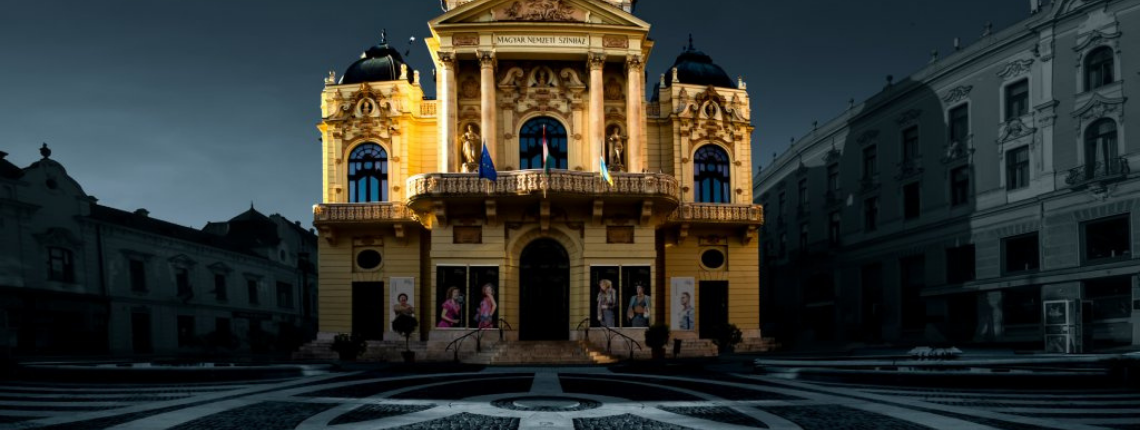In the mid-1800s, almost every nationality was represented. Hungarians, Germans, Bosniaks, Serbs, Croats, Austrians, Czechs, Moravians and Italians lived here in peace and harmony. Over the centuries of living together, they developed a mixed language, and it was this Babel into which the actors arrived with their literary language, using pure German and Hungarian.
That is when plays started to be performed regularly here, in Mecsekalja. The theatre in Pécs grew to be a significant centre of Hungarian theatre culture in the countryside. They provided performance opportunities for theatre troupes in the bigger dance halls, classy civil residences, inns and coffee houses. The “Elefántos Ház” (“Elephant House”) was one of the well-known performance venues, but the much-loved travelling theatres also brought plays to the small stage of Tettye.
There was local demand for a permanent theatre with a resident company in the city; people wanted to have a theatre that would provide regular artistic entertainment for them, and where social events could also be held.
The general assembly of Pécs established the Committee for Theatre Affairs with the purpose of choosing the plot where the theatre would be built, and they decided to have it at the site of the present Színház tér, where the military hospital stood at the time.
The city’s important institutions, offices, public and private residential buildings were built in this period, from about 1840, and Pécs’s characteristic look developed mostly during the construction work done in these times. János Aidinger, the mayor at the time was elected to be the president of the Committee for Theatre Affairs, who had the committee vote for introducing a supplementary county tax to cover the expenses of the theatre. The committee announced a national design tender in 1890. The tender was won by world-famous architects Adolf Lang and Antal Steinhardt, who started the construction of the theatre together with two other famous architects, Felmer and Helmer, with a starting budget of 10,000 HUF allocated by the general assembly.
The building features statues of prominent “theatre personalities” of the era Gergely Csiky, Ede Szgligeti, Károly Kisfaludy and Ferenc Erkel, and the Genius statue standing on the dome is the work of sculptor György Kiss and the creative team of the Zsolnay Porcelain Manufacture.
The theatre was opened on 5 October 1895 with a glamorous event, the daily newspaper Pécsi Napló published a special issue to celebrate the fantastic occasion, and the people were overjoyed. The company played Ferenc Erkel’s Bánk Bán on the grand opening, with huge success.
The condition of the National Theatre of Pécs building became life-threatening by 5 June 1986, when it had to be closed down. The building had to be fully renovated and was completed in June 1991. With that, the venue was renewed entirely. After that, standards of a modern era and the needs of the audience were served every evening by a revolving stage to present multiple scenes, an orchestra pit that could be lowered in 4 sections, which could also be used as an artistic feature, a new lighting, sound and video system and an air-conditioned auditorium.
The building was renovated again in the summer of 2011. As part of the work, the balconies were strengthened and the corroded supporting consoles were replaced. Decorative elements of the balcony were reinstalled and partly remade. The balcony was insulated and its concrete floor was renewed. The surface of the dome was fixed, the roof coverings were replaced, and the whole facade was renovated. Thanks to some generous entrepreneurs of Pécs, interior renovations were also carried out on the building. Not only the impressive entrance hall was renewed, but all the spaces accessible for the audience. The walls of the café are freshly painted, the golden stuccos are sparkling, and the boxes regained their former glamorousness.
Check out the statues and decorative features of the building with our interactive tool:

